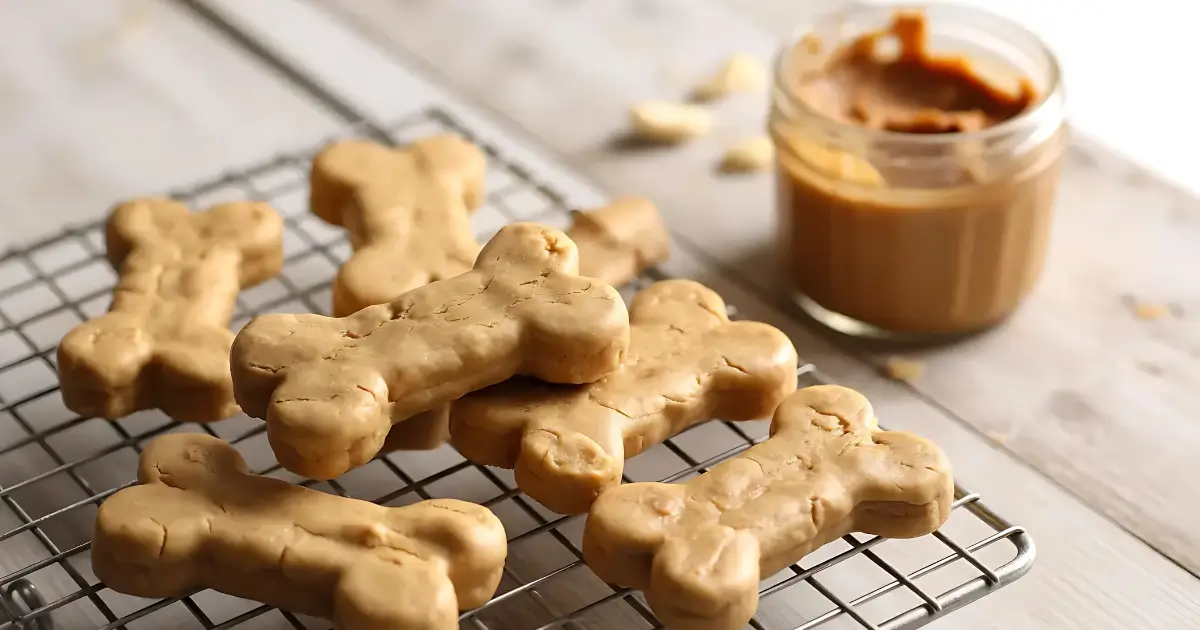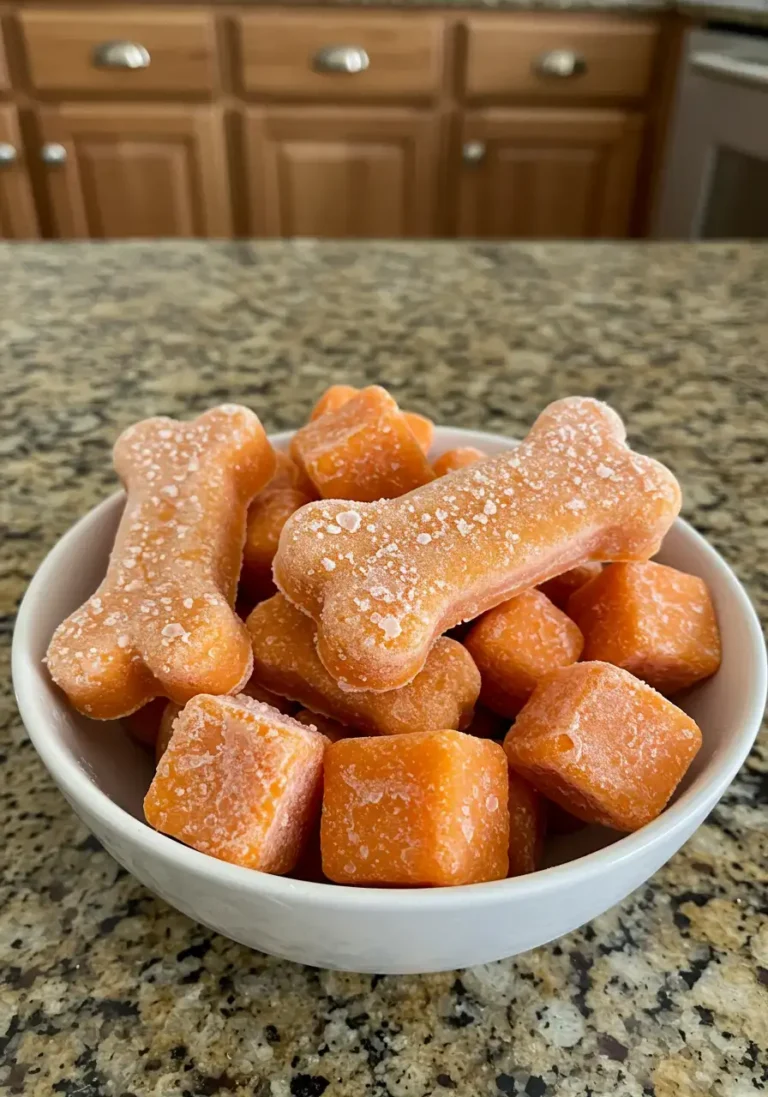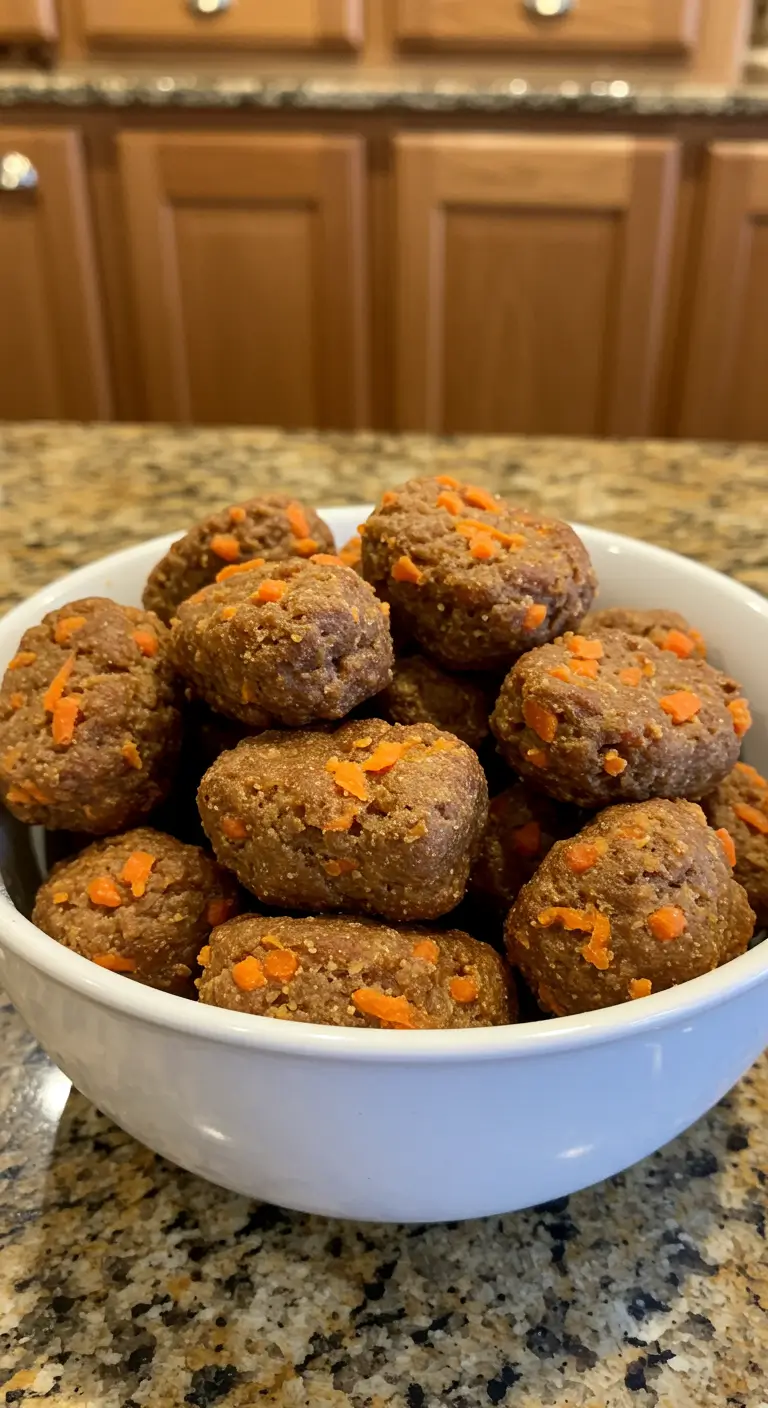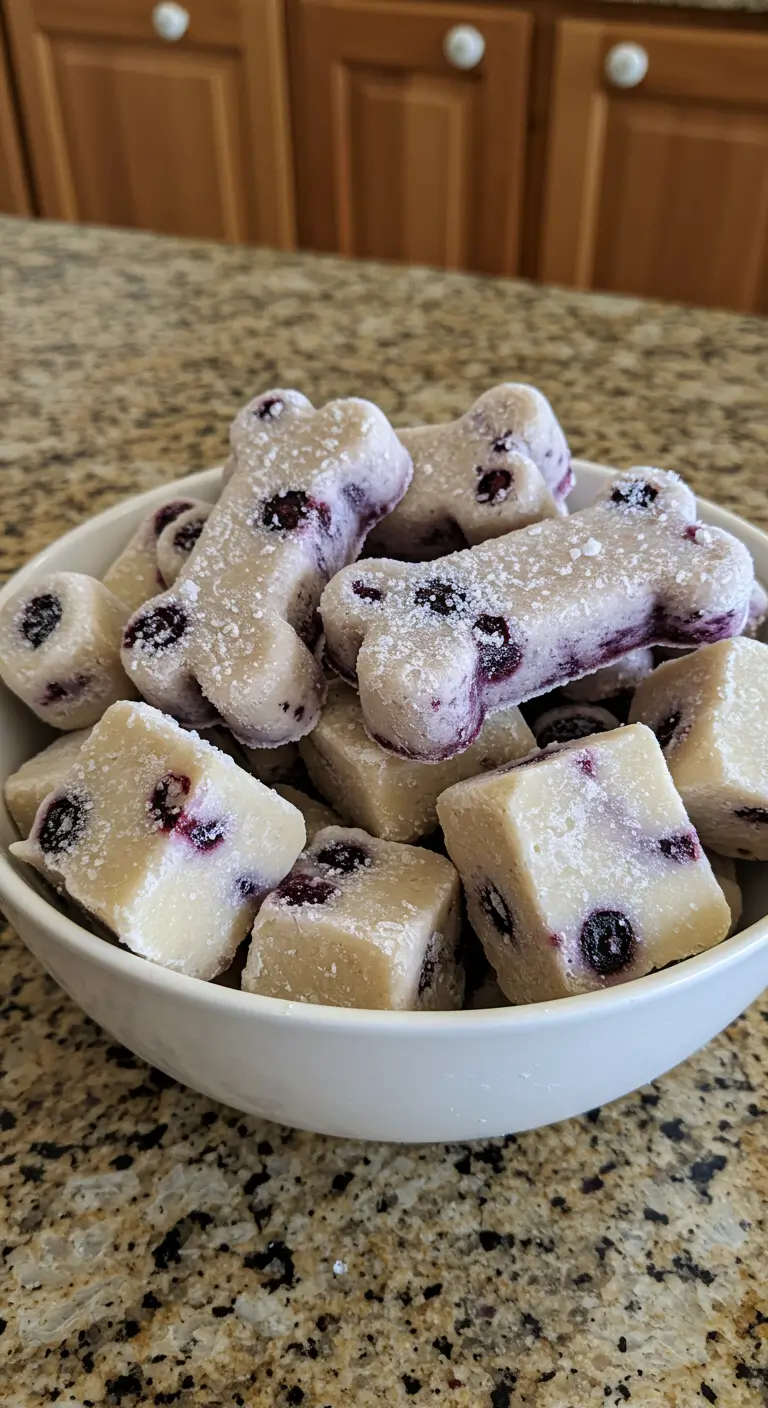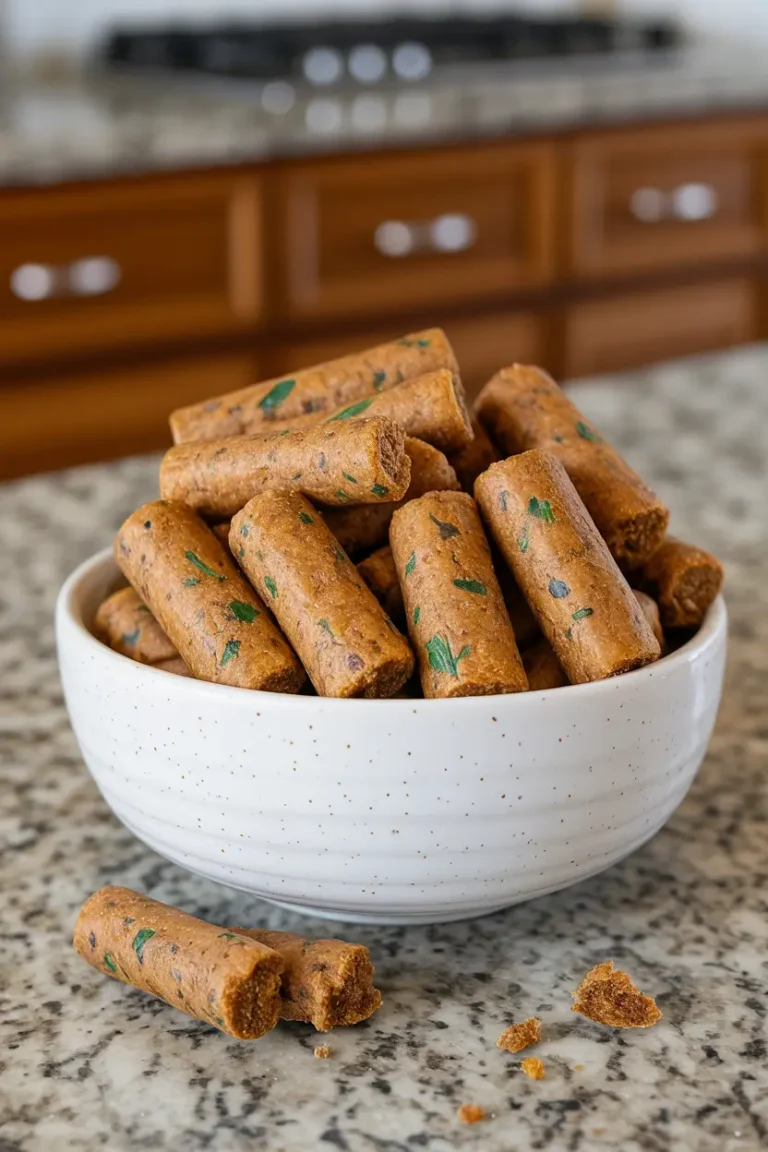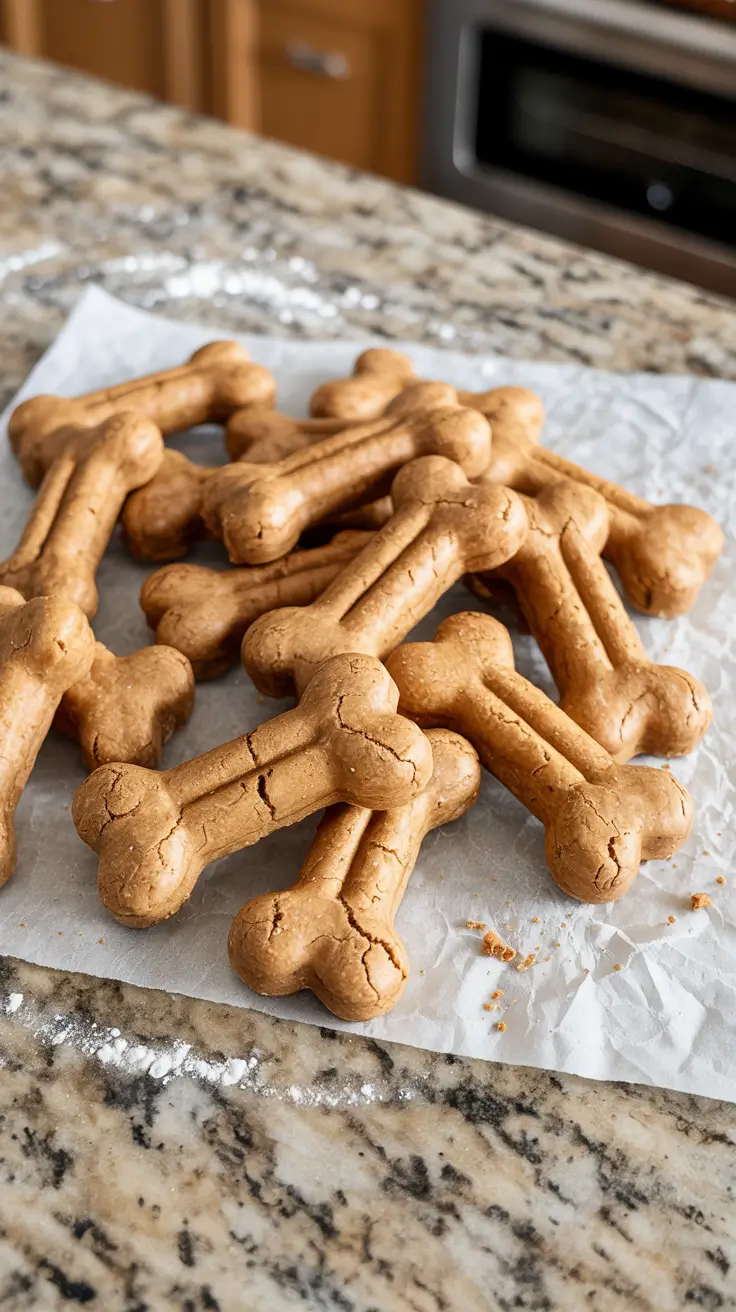Peanut Butter Dog Treats: 7 Easy Tips for Great Results
Dogs adore peanut butter’s rich, nutty flavor. Making your own peanut butter dog treats at home isn’t just economical, it’s an excellent way to ensure your furry friend enjoys healthy, preservative-free snacks. This comprehensive guide will walk you through everything you need to know about creating delicious homemade peanut butter dog treats that your canine companion will love.
Table of Contents
Why Make Homemade Peanut Butter Dog Treats?
Before diving into our dog treat recipes, let’s explore why making treats at home is beneficial for both you and your pet:
- Quality Control: You choose every ingredient that goes into your peanut butter dog treats, avoiding preservatives and additives in store-bought options.
- Cost-Effective: Homemade treats are generally more affordable than premium store brands.
- Customisation: Easily adjust ingredients based on your dog’s preferences and dietary needs.
- Bonding Experience: Making treats for your pet can be enjoyable and fulfilling.
- Freshness Promise: Nothing compares to the flavor and caliber of freshly made treats.
Prioritizing Safety: Selecting the Proper Peanut Butter for Dogs
Not all peanut butter varieties used in dog treats are created equal. Be mindful of these important safety considerations:
Xylitol Warning
Always check the ingredient label. Certain brands of peanut butter include xylitol, an artificial sweetener that is extremely harmful to dogs. Even small amounts can cause hypoglycemia (low blood sugar), seizures, liver failure, or even death in dogs.
Best Peanut Butter Options for Dogs:
- Natural, unsweetened peanut butter
- Brands with just peanuts and salt
- Organic varieties without added oils or sugars
“The safest peanut butter for dogs contains only peanuts, or peanuts and salt. Always verify the ingredient list to ensure there’s no xylitol, excessive sugar, or hydrogenated oils.”
Essential Homemade Peanut Butter Dog Treats Recipe
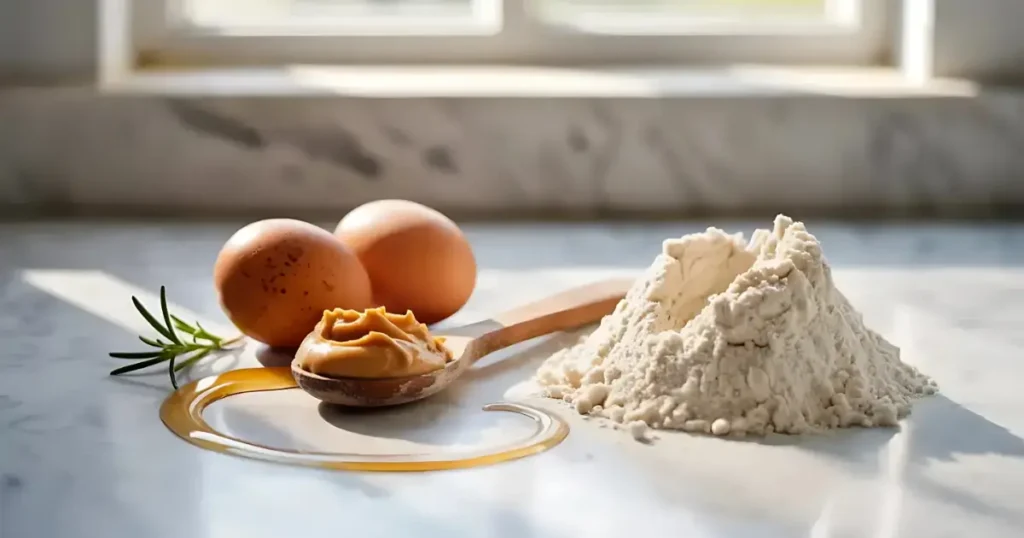
This delicious yet straightforward peanut dog treats recipe yields approximately 24 medium-sized treats your furry friend will adore.
Ingredients:
- 2 cups whole wheat flour (or oat flour for sensitive stomachs)
- 1/2 cup natural peanut butter (xylitol-free)
- 2 eggs
- 1/4 cup water (plus a little extra if needed)
- 1 tablespoon honey (optional)
Equipment Needed:
- Mixing bowl
- Rolling pin
- Cookie cutters (any shape works, but bone-shaped ones are fun)
- Baking sheet
- Parchment paper
Instructions:
- Preheat your oven to 350°F (175°C).
- In a big bowl, combine the peanut butter, eggs, and honey (if using).
- Add the flour gradually, mixing well.
- As necessary, add water to make the dough workable. The consistency should be firm but not sticky.
- Roll the dough to about 1/4 inch thickness on a lightly floured surface.
- Cut into desired shapes with cookie cutters.
- Place treats on a parchment-lined baking sheet.
- Bake for 15-18 minutes until the edges are golden brown.
- Cool completely before serving or storing.
7 Tips for Perfect Peanut Butter Dog Treats
1. Choose the Right Flour
While whole wheat flour works great for most dogs, consider these alternatives for pups with specific dietary needs:
- Oat flour: Excellent for dogs with wheat sensitivities
- Coconut flour: Good grain-free option (note: absorbs more liquid)
- Brown rice flour: Another gentle option for sensitive stomachs
2. Perfect Texture Techniques
The texture of your homemade peanut butter dog treats affects both palatability and shelf life:
- Softer treats: Reduce baking time by 2-3 minutes
- Crunchier treats: After initial baking, turn off the oven and leave treats inside as it cools for extra crispness
- Chewy treats: Add a tablespoon of coconut oil to the recipe
3. Enhance Nutritional Value
Boost the health benefits of your dog treat recipes with these nutritious add-ins:
- Pumpkin puree (1/4 cup): Adds fibre and vitamin A
- Grated carrots (1/4 cup): Provides beta-carotene and crunch
- Ground flaxseed (1 tablespoon): Offers omega-3 fatty acids
4. Proper Dough Handling
- To make handling the dough easier, chill it for 15 to 30 minutes before rolling.
- Use parchment paper above and below the dough to prevent sticking without adding extra flour
- Maintain even thickness for uniform baking
5. Creative Variations
Keep your pup excited with these variations of peanut butter dog treats:
- Banana-PB Combo: Add 1/2 ripe mashed banana for sweetness
- Pumpkin Spice: Mix in 1/4 cup pumpkin puree and a pinch of cinnamon
- Apple Crunch: Add 1/4 cup finely diced apple (no seeds)
6. Smart Storage Solutions
Proper storage extends the life of your homemade peanut butter dog treats:
- Room temperature: 5-7 days in an airtight container
- Refrigerator: Up to 2 weeks in a sealed container
- Freezer: Up to 3 months in freezer-safe bags
7. Size Appropriately
Match treat size to your dog’s size:
- Small dogs: Treats should be about the size of a dime
- Medium dogs: Quarter-sized treats work well
- Large dogs: Half-dollar-sized treats are appropriate
Remember: Even with healthy treats, moderation is key to maintaining your dog’s ideal weight.
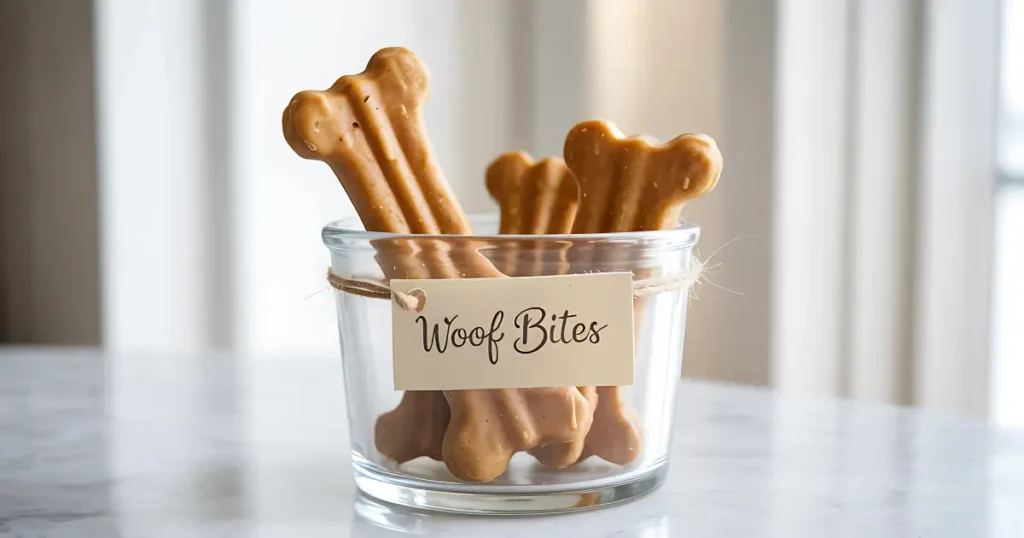
Nutritional Profile of Homemade Peanut Butter Dog Treats
Understanding the nutritional benefits of peanut butter in dog treats can help you make informed decisions about serving sizes and frequency:
| Nutrient | Benefit to Dogs | Primary Source in Recipe |
|---|---|---|
| Protein | Muscle maintenance | Peanut butter, eggs |
| Healthy fats | Energy, coat health | Peanut butter |
| Fiber | Digestive health | Whole wheat flour |
| Vitamin E | Immune function, skin health | Peanut butter |
| B vitamins | Energy metabolism | Peanut butter, whole grains |
| Niacin | Enzyme function, energy | Peanut butter |
When to Serve Peanut Butter Dog Treats
Knowing when to offer these treats can help maximise their effectiveness:
- Training sessions: The strong aroma makes them perfect attention-grabbers
- After exercise: A slight protein boost after physical activity
- Medication time: Hide pills inside a soft version of these treats
- Special occasions: Celebrate your furry friend’s birthday or “gotcha” day
Bold reminder: Even healthier homemade treats should only make up 10% of your dog’s daily caloric intake.
Key Takeaways
- Safety first: Always use xylitol-free peanut butter when making peanut butter dog treats
- Simple ingredients: The best dog treat recipes often have five ingredients or fewer
- Customizable: Easily adjust the recipe to accommodate allergies or preferences
- Storage matters: Proper storage extends freshness and prevents waste
- Portion control: Moderation is key when it comes to even healthy treats.
Conclusion
Making peanut butter dog treats at home provides your furry friend with delicious, wholesome snacks while avoiding unnecessary additives and preservatives. With our simple recipe and helpful tips, you’ll be well on your way to creating treats that will have your dog’s tail wagging with excitement. Remember that the joy of homemade treats comes not just from the tasty result but also from the love you put into making something special for your four-legged family member. So grab your ingredients, preheat that oven, and get ready to become your dog’s favourite treat maker!
Curious about other nutrient-packed treats? Learn whether liver is safe for dogs to eat and how to serve it.
Frequently Asked Questions
How long is the shelf life of homemade peanut butter dog treats?
When stored in an airtight container at room temperature, homemade peanut butter dog treats typically last 5-7 days. Refrigerating extends shelf life to about 2 weeks, while freezing allows them to last up to 3 months. Watch for any signs of mould or an off smell, which indicate it’s time to discard them.
Can I make dog treats with crunchy peanut butter?
Both smooth and crunchy peanut butter work well in dog treat recipes. Crunchy peanut butter adds an interesting texture your dog might enjoy, but smooth peanut butter is easier to mix into the dough. Making sure the peanut butter is free of xylitol and excessive added sugars is the most crucial step.
Are peanut butter treats safe for all dogs?
Peanut butter dog treats are safe for the majority of dogs, but they may need to be avoided by those with certain medical conditions like pancreatitis or peanut allergies (yes, dogs can have them!). If your dog is on a special diet or has health issues, always get advice from your veterinarian before introducing new treats. Additionally, keep in mind that treats should only make up a small percentage of your dog’s daily diet.

